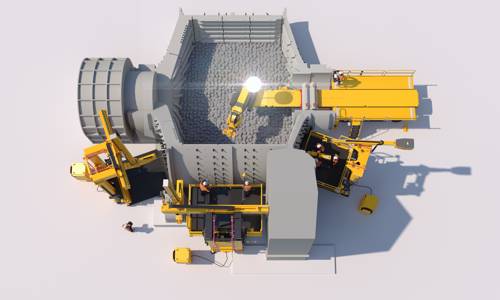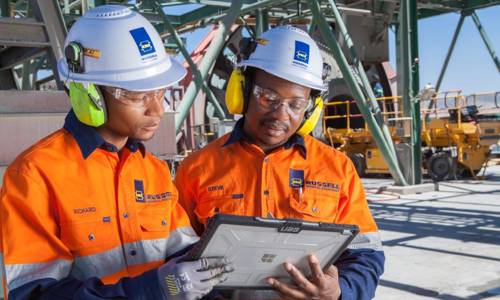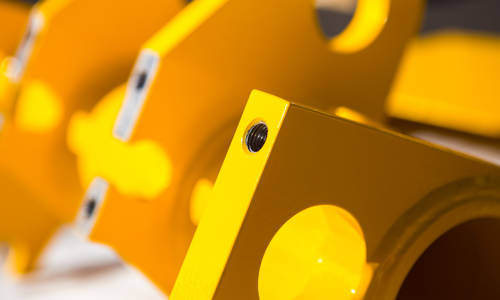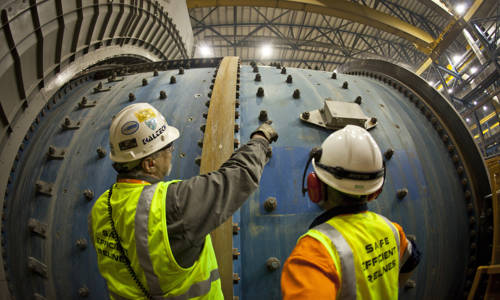29 May 2025
How automation is transforming mill relining: Lessons from GRX25
RME’s Chief Engineer, Simon Thompson, recently delivered a powerful keynote at GRX25, on how automation is transforming mill relining safety and efficiency. He emphasised that while mechanisation has significantly improved safety, risks remain—and RME is doubling down on solutions to eliminate them.
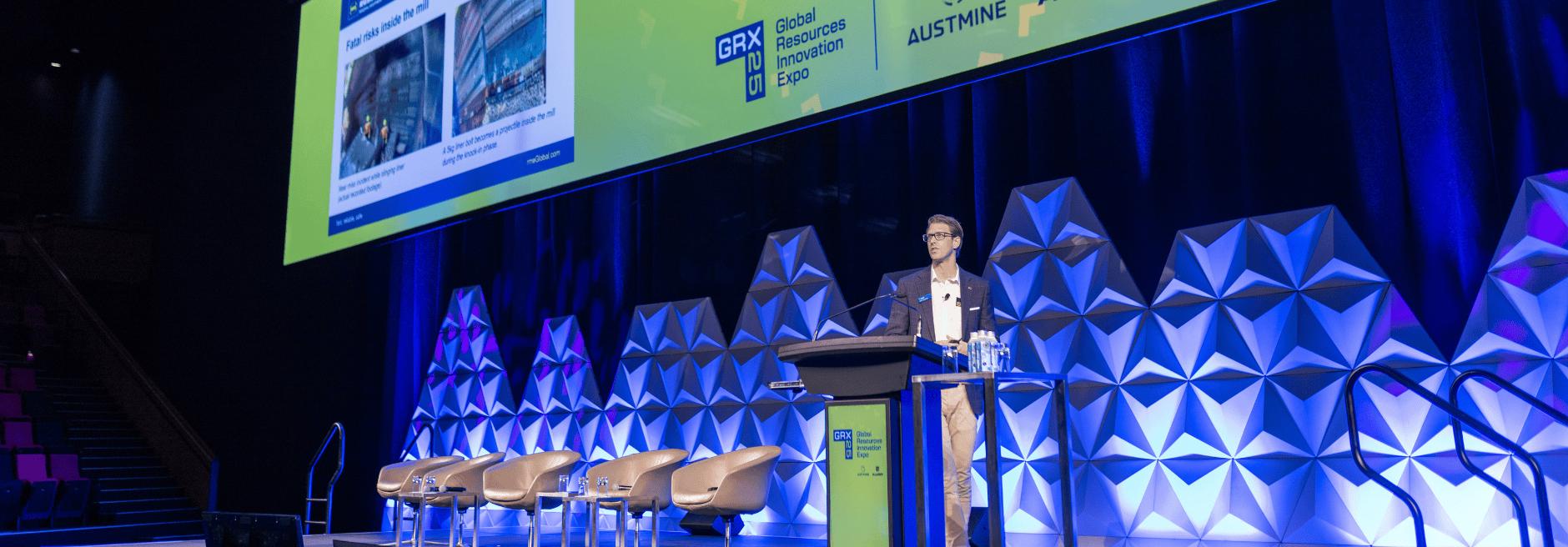
The Global Resources Innovation Expo (GRX25), hosted by Austmine and AusIMM in Brisbane from 20–22 May 2025, brought together industry leaders to explore advancements in mining innovation, technology, and sustainability.
On day one of the conference, RME’s Chief Engineer, Simon Thompson, delivered a powerful keynote, as described by Austmine, exploring the growing role of automation in enhancing mill relining safety.
Simon Thompson was recently appointed as RME’s Chief Engineer, strengthening the company’s position as the world’s most trusted OEM in mill relining systems and leader in advanced technology.
His keynote, “Mill Relining Automation: Applying Lessons Learned,” based on a recent RME conference paper (author credits below), explored how automation is eliminating fatal risks and improving productivity at mine sites adopting these technologies, and what have been the valuable lessons along the optimisation journey.
Why automation is essential for mill relining
Mechanised relining—first envisioned by RME's Founder, Dr John Russell, four decades ago, then commercialised, and matured through the company’s engineering expertise—significantly enhanced safety and efficiency in mill maintenance. By reducing manual handling, it enabled the use of larger, heavier liners—which decreased piece count, shortened relining time, and improved mill availability. Yet despite this progress, fatal risks remain.
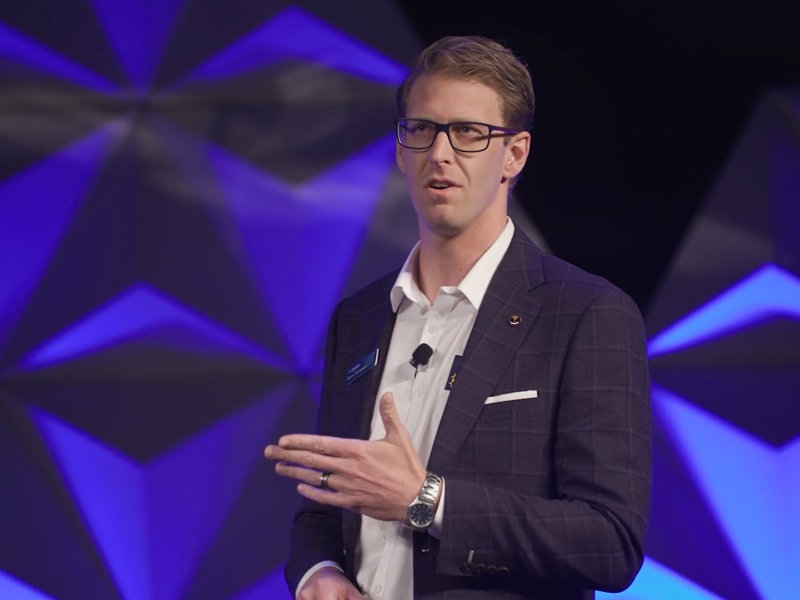
“In mechanised relining, residual risks still exist—you’ve got confined spaces, working at heights, and the challenge of working under multi-tonne suspended loads in proximity to mobile plant and equipment. Automation is the next step—it removes people from inside the mill and fatal risk from relining activities.”
Simon’s keynote included real-world footage illustrating continuing relining hazards. One clip showed a three-to-four-tonne liner dropped due to incorrect slinging practices, narrowly missing the reline crew working on the charge (the mill floor) below. Another demonstrated how a five-kilogram liner bolt behaves like a projectile during knock-in, which would be near impossible to dodge, underscoring the unpredictability of hazards inside the mill.
“These show the real-world hazards operators face. They reinforce why automation—which removes personnel from the mill—is essential for eliminating fatal risks and enhancing safety for our reline crews.”
Best practice then, is not best practice now
Simon also examined the shift in relining safety, comparing conventional methods side-by-side to modern automation-driven practices.
In traditional liner removal, operators work inside the mill, manually slinging liners out. This process was depicted in earlier footage of an incident where a slung liner dropped from height onto the mill charge, narrowly missing workers—a stark reminder of the risks involved.
By contrast, the latest technology for mucking-out—which RME calls the RUSSELL Claw—securely picks up the liner and takes it to the liner cart, eliminating the need for personnel to work on the charge, slinging and rigging liners manually. The safety benefits are measurable. By analysing person-hours of hazard exposure per reline, automation has reduced exposure by 80% at one mine site.
“While traditional practices were considered best practice at the time, they involved nearly six times the hazard exposure compared to today's advanced process.”
RME also makes clear that this technology can deliver significant safety uplift without requiring an automated liner exchange machine or knock-in system. As a result, it can be retrofitted to most operational 7- and 8-axis RUSSELL Mill Relining Machines, ensuring accessibility and affordability for mills of all sizes—including large, medium, and small operations, as well as brownfield and greenfield sites. Register here to download a case study on its impact at Minera Escondida.
How automation unlocks new levels of productivity
Beyond safety, automation is a key driver of efficiency, optimising multi-functional movements and pre-programmed travel paths and sequencing to accelerate reline time and improve mill availability.
Mill liner handlers typically feature seven or eight axes of motion, allowing for precise, flexible liner placement. Manually, this process requires careful coordination, so it is constrained by operator proficiency. Automation synchronises all available functions, enabling faster liner handling and positioning.
“Since personnel are removed from inside the mill, we can also increase function speed, allowing the machine to operate at peak performance. And let’s not forget—it’s a robot. It doesn’t experience fatigue, just consistency and repeatability.”
Simon highlighted a case study demonstrating significant speed improvements in outside-the-mill activities achieved through automaton, noting a 75% increase in hammer movement speed compared to conventional methods that relied on a jib suspension system and multiple crew members manually guiding the hammer.
“The automated suspension and positioning technology (of THUNDERBOLT SKYWAY) allows the recoilless hammer to knock-in bolt after bolt after bolt. It’s a simple and smooth sequence. It’s beautiful to watch.”
RME notes that overhead suspension systems which automate external mill tooling can offer advantages for sites with limited deck space and greater flexibility for mill and drive system access during shutdowns for other planned maintenance activities.
What’s next for mill relining automation?
As automation adoption grows, industry expectations for functionality and efficiency continue rising. Composite liners, particularly in South America, are reshaping tooling requirements, while increased automation means users expect expanded capabilities from their technology investments.
To meet this demand, RME highlighted its THUNDERBOLT Torquer module for SKYWAY and SKYPORT, which automates more relining activities outside the mill.
“Torquer now enables rapid fastener removal. It's also versatile, handling seized fasteners and reducing the need for high-risk hot works. It can also push liners into the mill—without requiring a hammer tooling change. And it can reinstall fasteners with precision torque, tracking torque values to minimise bolt failure risk—all while eliminating manual handling and enhancing safety outcomes.”
Automation overcomes relining hesitations to boost throughput
At recent mineral processing conferences, comminution experts have further explored how increasing reline frequency can improve concentrator throughput.
Simon Thompson cited an example from a Western Australian gold miner, who extended their liner replacement schedule from four to six months, despite knowing their throughput was better at four months, questioning, “Why do we do that? Why do we push liner life to the point where throughput drops?”
"I think it’s in part because we fear the reline. We fear the safety risks. We fear the production risks of a less-than-ideal reline. But when we automate reline tasks we remove these concerns. We can improve safety. We can certainly improve reline speed. And we can increase throughput.”
Multiple studies have shown that integrating performance-optimised liners with more frequent, faster, and safer relines—enabled by today's advanced methods—allows mill operators to eliminate the mill’s lower performance phases at the beginning and end of the liner lifecycle, driving higher throughput while simultaneously optimising energy efficiencies. Read our recent blog to review this research and learn more about throughput optimised relining.
Watch Simon Thompsons full keynote at GRX25
To explore these insights further and understand the commercial outcomes mine sites are achieving—including where to best begin on the journey toward automated mill relining—watch Simon Thompson’s keynote from GRX25 by clicking on the thumbnail above.
Learn More
Reach out to RME to explore how RME Advanced Technology can benefit your mine site.
You can also register to download the paper which inspired this keynote: Mill Relining Automation – Applying Lessons Learned, authored by: S. Gwynn-Jones¹, T. A. Ogden², J. Bohorquez³, D. Sims⁴, M. Turner⁵, C. Kramer⁶, and S. Smith⁷.
If you'd like to speak to an application expert about RME Advanced Technology, please reach out to RME.
CONTINUE TO EXPLORE RME ADVANCED TECHNOLOGY
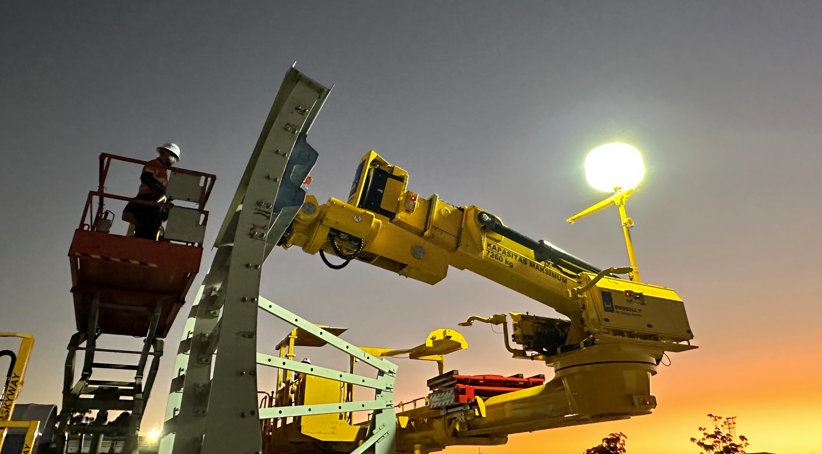
RME ADVANCED TECHNOLOGY
Our relentless pursuit to improve safety and productivity has driven us to engineer a future where relining is performed safely from outside the mill – at faster speeds than ever before.
Read More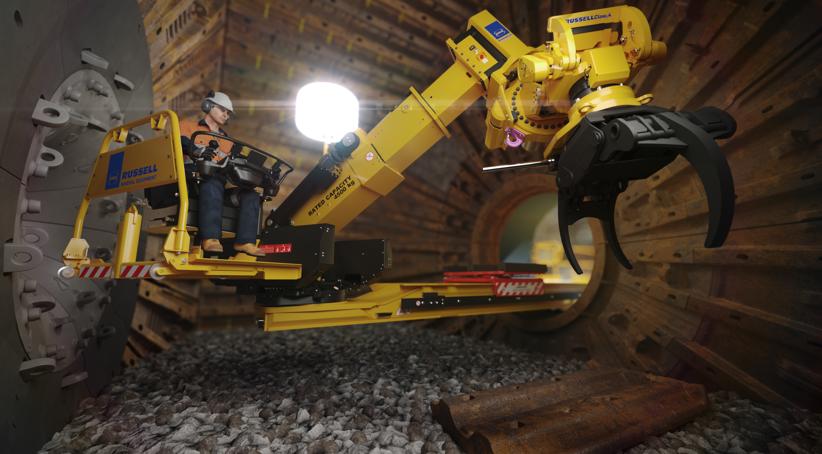
RUSSELL CLAW
Introducing the RUSSELL Claw™ – the new master of muck-out. It eliminates hazardous manual liner slinging, enabling worn liner removal with no crew on the charge. Lifting capacity up to 8000 kg.
Read More
